Kaurna, Banggarla and Ngadjuri Country
For a long time, I have been keen to get over to South Australia (S.A.) and visit the Flinders Ranges and Kangaroo Island (K.I.) and when a week off work was going begging the opportunity arose.
The lead up to the holiday was tense with a 1 in 50 year storm blasting South Australia, swamping large areas and knocking out power to the entire state, fortunately though by the time of my arrival the weather and flooding had improved enough not to affect my plans.
Preparation for the trip included reading David Andrews book “The complete guide to finding the mammals of Australia” and the previous contributors to the S.A. section of mammalwatching.com to whom I am grateful.
Fri 7th Oct – Adelaide
I flew into Adelaide from Perth Friday afternoon arriving 10.30pm after a two and a half hour time difference. Saturday morning, I walked from the CBD down to the First Creek Area between Adelaide Zoo and the Botanic Gardens where a colony of Grey-headed Flying Foxes were easily found roosting in the top of large pine trees.
Grey-headed Flying Foxes

I searched around the old bridge near the Zoo for Water Rats but unfortunately without luck.
Sat 8th Oct – Quorn
I picked up the hire car and drove four hours North of Adelaide to Quorn a town in the Southern Flinders Ranges. This was my base from which to visit Warren Gorge where I hoped to see the Yellow-footed Rock Wallabies. Warren Gorge is a 21km drive from Quorn on a sealed road (the gorge road itself is unsealed.) On the drive into the gorge I passed a couple of Shingle-back Lizards that had rekindled their annual union ready to mate.
Shingle-back Lizards.

Once at the gorge I positioned myself on a rock face facing what I hoped was good Rock Wallaby habitat on the South side of the gorge just past the Visitor Registration Station.
Warren Gorge (The Area I saw the Wallaby.)
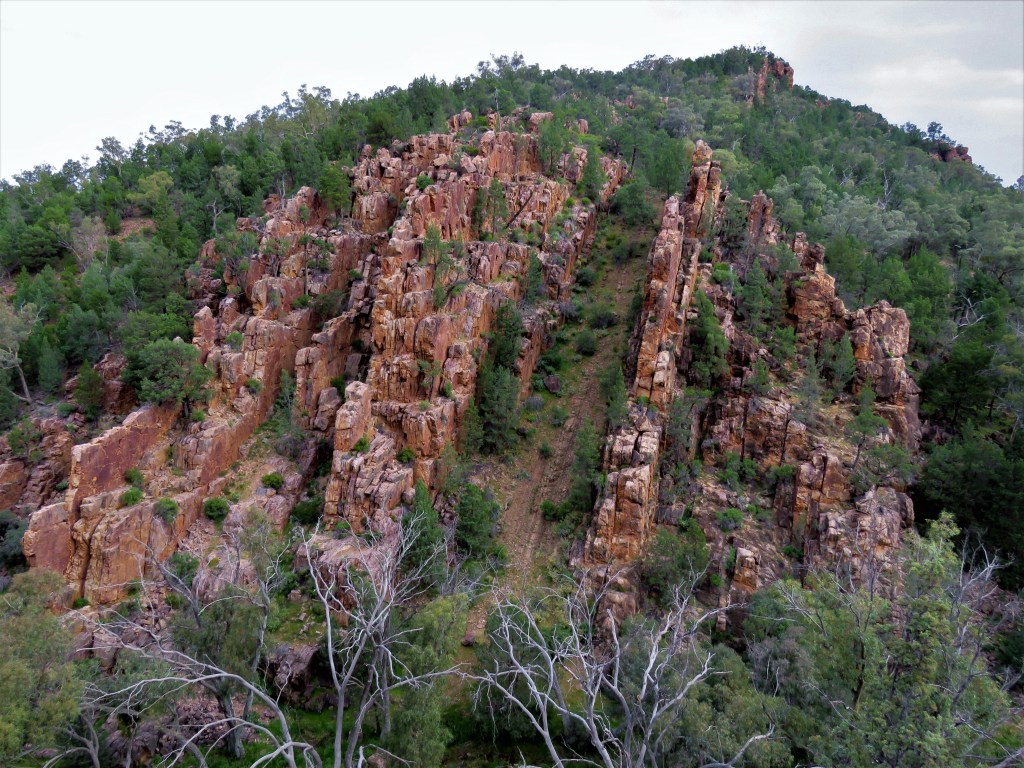
The Wallaby I observed came out 90 mins before sunset to forage and I was able to get good views eventually crossing the gorge to get a closer look. Other visitors to the gorge saw a different Rock Wallaby on the cliff face immediately after the track dog legs right.
Yellow-footed Rock Wallaby.
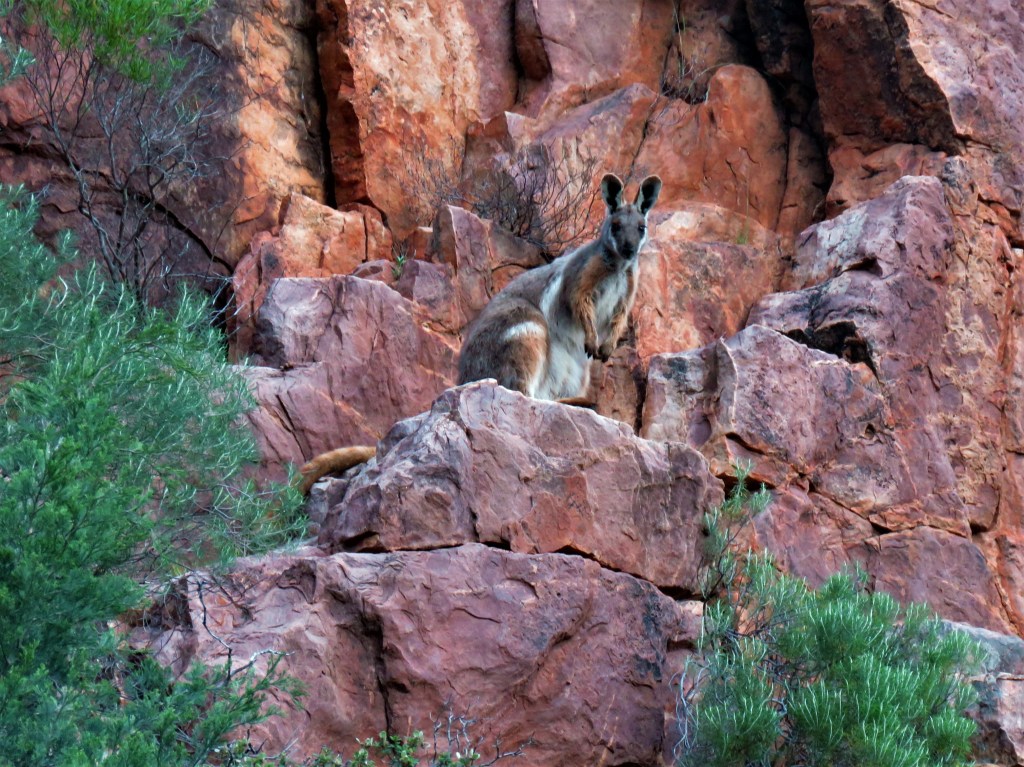
Leaving the gorge there were Western Grey Kangaroos at the junction of the gorge road with the Arden Vale Road back into Quorn.
Sun 9th Mon 10th Oct – Flinders Ranges N.P.
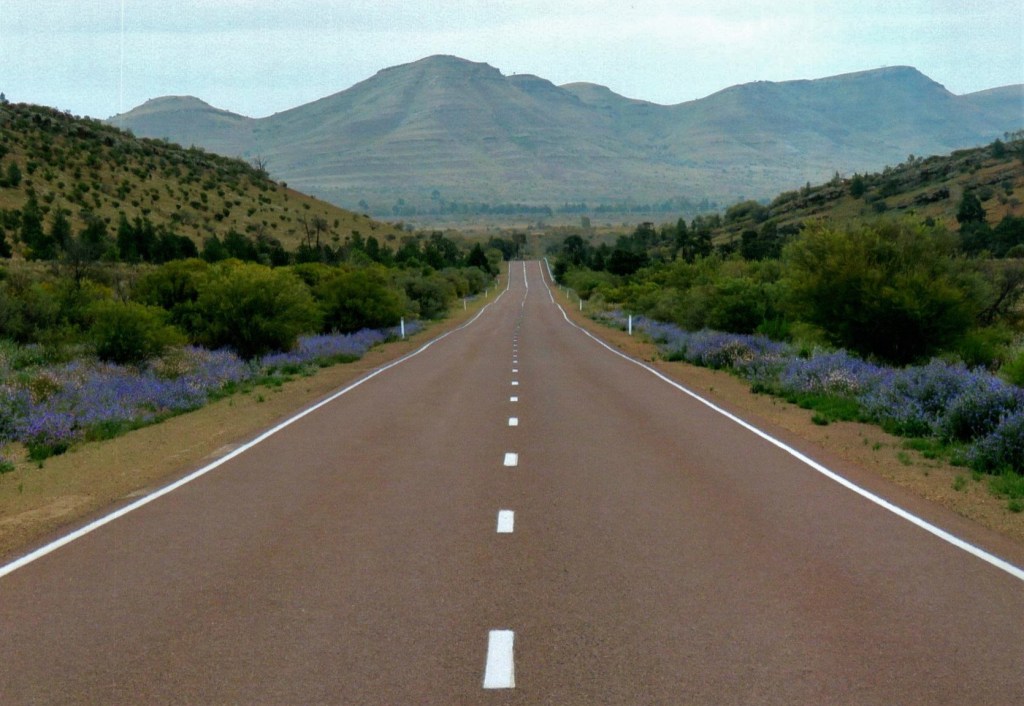
The following morning I drove an hour and a half further North to Wilpena Pound Resort where I stayed the next two nights. I had read previous to the trip that translocation of Western Quolls from Western Australia and Brushtail Possums into the Flinders Range National Park (N.P.) had been successful. This was a re-introduction of these species as they had occurred in the Flinders Ranges prior to the arrival of the Europeans.
Flinders Ranges.
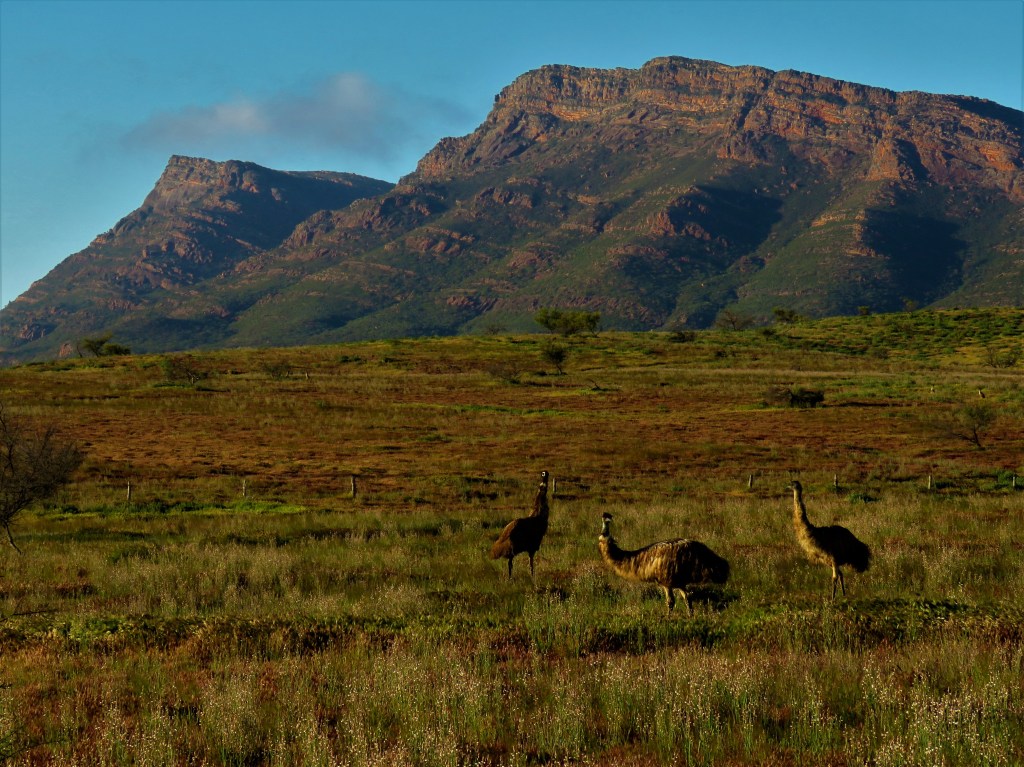
Once I had settled into the resort, I set off to climb Mount Ohlssen Bagge a 5.4km return walk. There were plenty of colourful Tawny Dragons sunning themselves on the rocks over the course of the walk which made for some great photos, and the views from the top weren’t bad either!
Tawny Dragon.

Views from the peak of Mount Ohlssen Bagge.

The first evening I drove 20 minutes from the resort to the Stokes Hill Lookout which is a good place to view the Common Wallaroo (Euro.) There were up to ten Euros grazing on the hills surrounding the lookout during my visit two hours before sunset.
Common Wallaroo (Euro.)

I had been advised by the Visitor Centre a good place to view Red Kangaroos was around Wilpena Homestead and the Airport near to the resort and both nights they were good numbers of Red Kangaroos grazing at dusk and dawn.
Red Kangaroo.
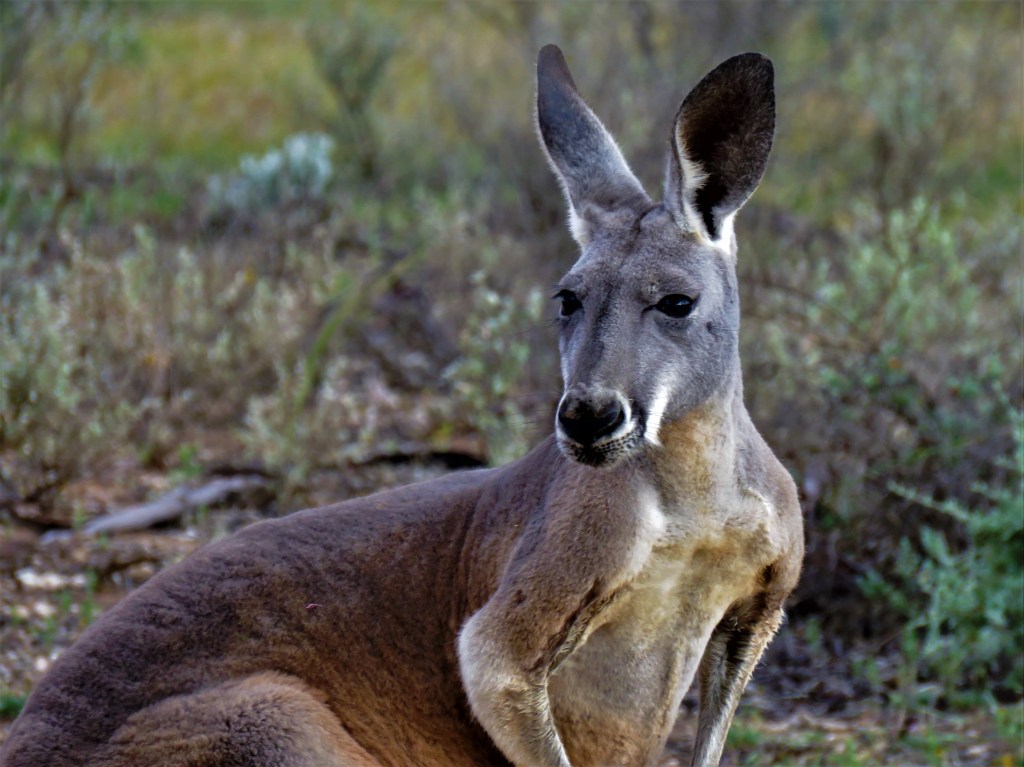
The larger Macropods of the Flinders Ranges occupy specific niches with Euros on the rocky hills, Red Kangaroos on low open plains whilst the Western Greys kept to low wooded areas.
The first night I had a spotlight around the Old Homestead but didn’t find any Quolls/Possums. There were however plenty of Rabbits and larger Macropods.
The second night on a whim I decided to visit Brachina Gorge to find the resident Yellow-footed Rock Wallabies. In hindsight I should have confirmed the exact location of the Rock Wallabies with the Visitor Centre at Wilpena Pound because the 4WD track through the gorge itself spans a number of kilometers and it wasn’t obvious to me where the exact location was, The Rock Wallaby site is (apparently) on the North face of the gorge where there is an obvious jumble of boulders and scree, also there is a pull over bay on the track at the site I have since found out, although there isn’t signage. In the event I didn’t find the Rock Wallabies when I visited Brachina, which was a shame, but the gorge was awesome and the 4WD track itself was an exhilarating and challenging drive after the recent rains.
On the drive from the Flinders Ranges to Riverland I saw another impressive Shingle-back Lizard. I was really taken with these beautiful Lizards with their almost pine cone like appearance.
Shingle-back Lizard.
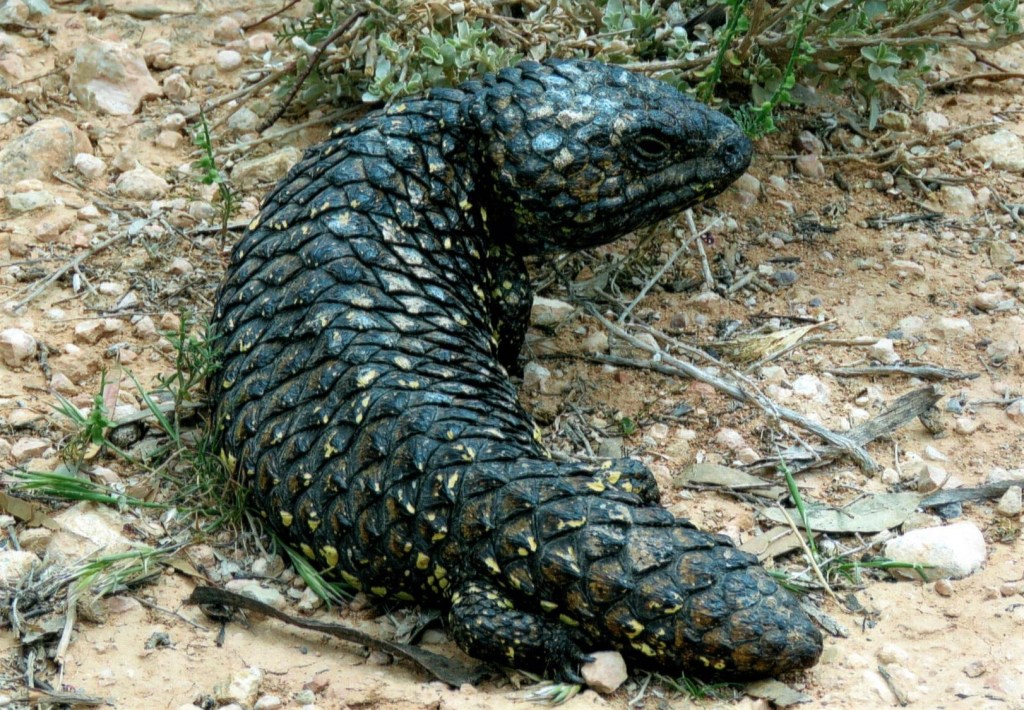
Tues 11th Oct – Brookfield Reserve
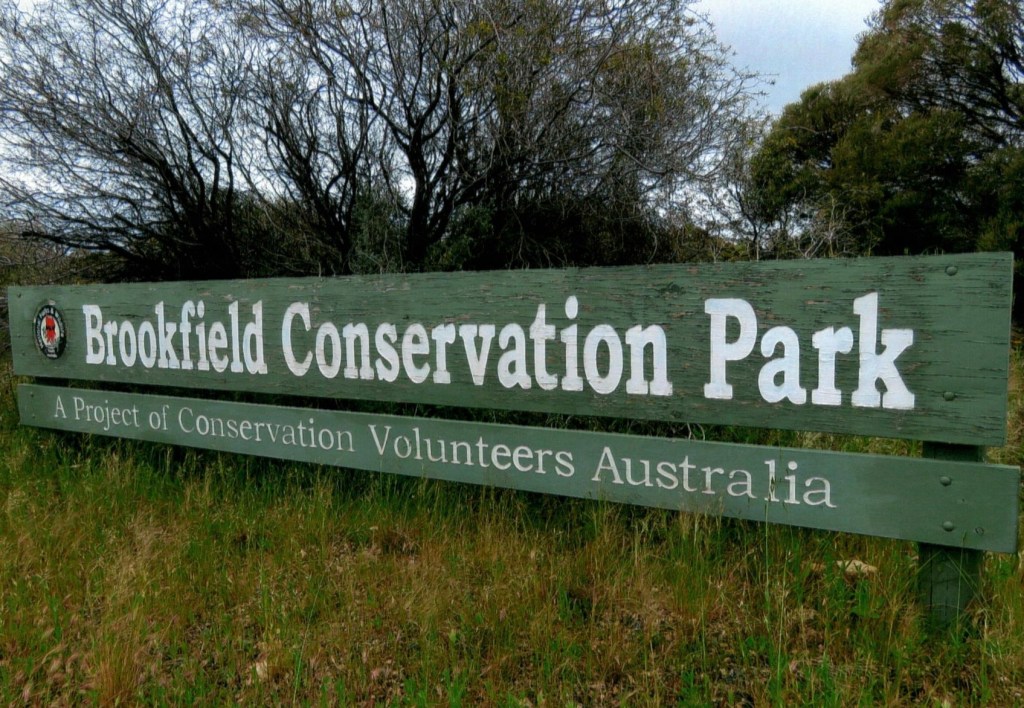
I visited Brookfield Reserve in the Riverland Region of S.A. to look for the Southern Hairy-nosed Wombat (SHNW.) I had only allowed one night to look for the Wombat and I was under no illusion that it was going to be a bit hit and miss. I stayed at a caravan park in nearby Blanchetown 11kms East of the reserve and the roadhouse at Blanchetown does a good selection of meals, as does the pub.
Sulphur-crested Cockatoo – River Murray.

Access to Brookfield is only during daylight hours as the site is also used for important scientific research, and whilst infrastructure for day visitors to Brookfield is basic (there is a picnic area and walk trails) the road themselves are unsealed and a little rough in places but are fine for 2WD. The country itself is mallee country that has a certain rugged beauty to it.
Brookfield Reserve.

I drove to Brookfield early afternoon to get a feel for the area and I found the Three Habitat Walk really informative on the SHNW and a bonus is that the walk passes close to a number of active Wombat burrows.
I was unsure about how to approach viewing Wombats that evening as all the literature I had read suggested sitting near an active burrow and waiting for the occupant to leave for the nights foraging. My problem with that was that if I arrived after the occupant departed I was going to be sitting outside an empty burrow so I opted to drive around and look for grazing Wombats instead.
Returning to the park around 5pm the evening shift was out with large numbers of Western Grey Kangaroos grazing, this time driving really slowly around Brookfield I was amazed by how many Wombat burrows there were on the property, then out of the scrub and down the track in front of me I got great views of the back end of a SHNW as startled it bolted for the safety of it burrow.
Western Grey Kangaroo.
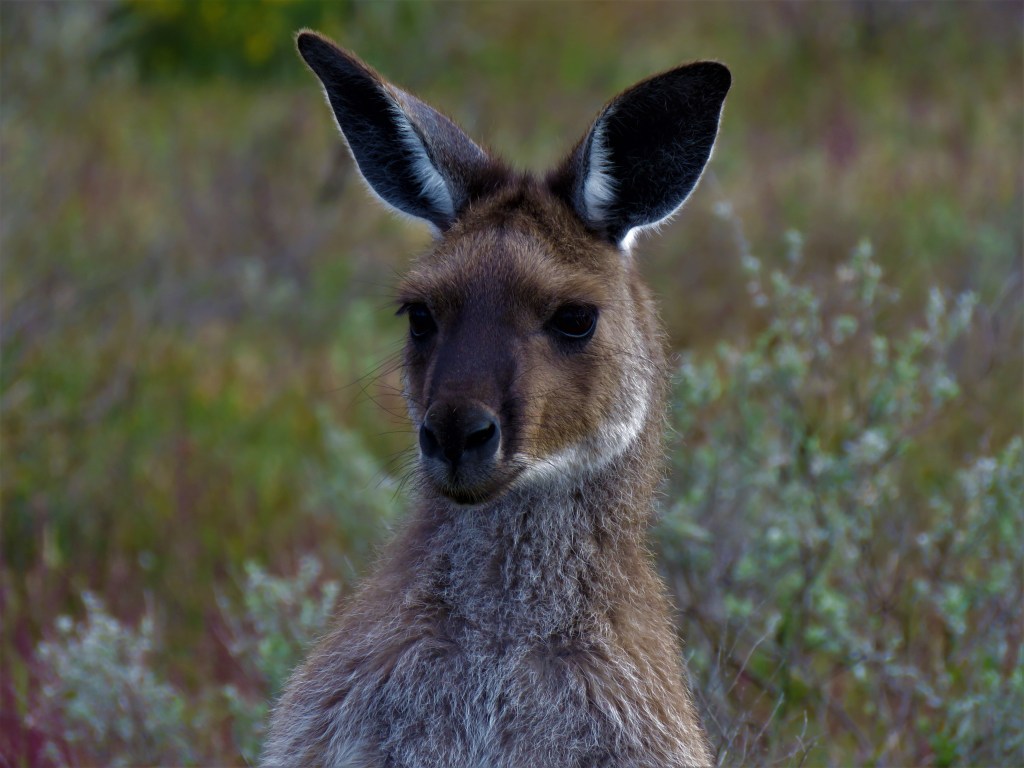
Now here was a burrow I was happy to stake out because I knew for sure there was a SHNW resident and within 15 minutes as the Wombat reappeared to graze I had great views. I was surprised how early I saw the Wombat in the afternoon (ninety minutes before sunset) because I had expected this species to be more crepuscular.
Southern Hairy-nosed Wombat.
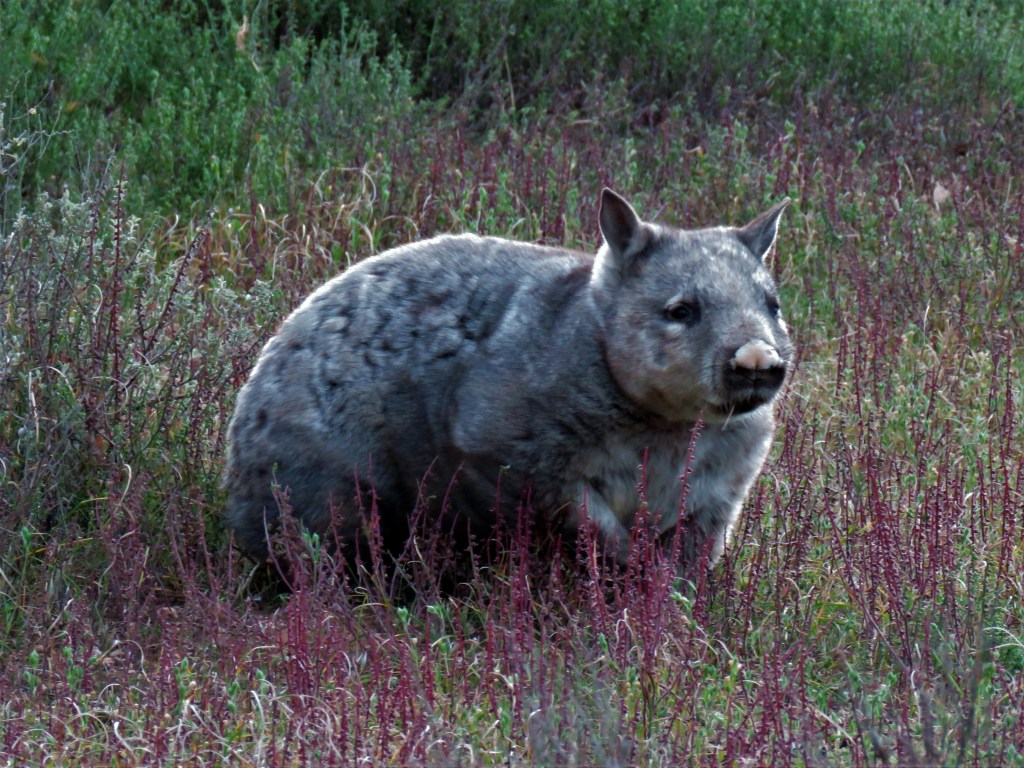
Returning the following morning I drove the Blue Bush Track but my luck regarding the SHNW had run out, although there were good numbers of both Western Grey and Red Kangaroos around.
Kangaroos Island (K.I.) Wed 12th Thurs 13th Fri 14th Oct
Entrance to Flinders Chase National Park.
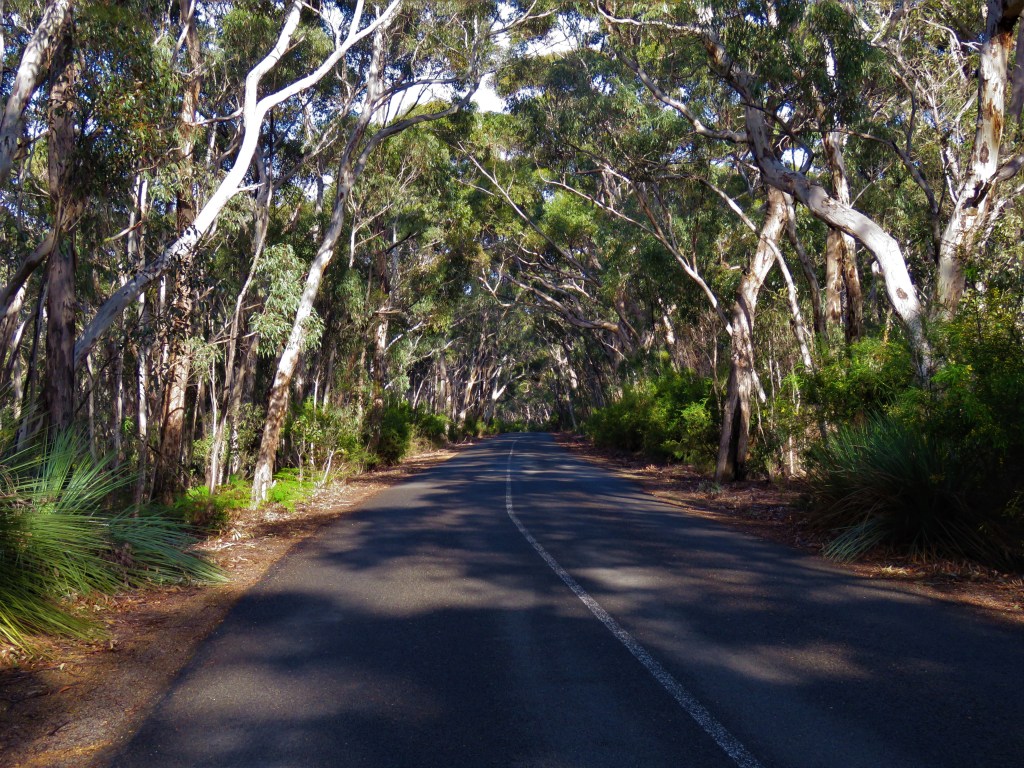
Remarkable Rocks.
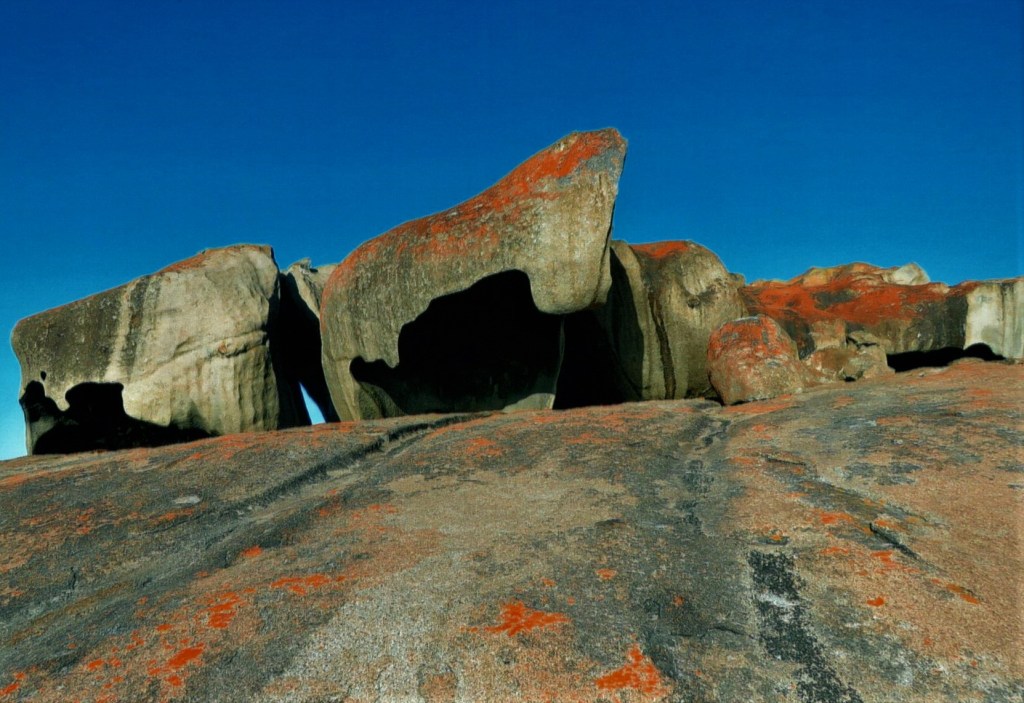
Wow K.I. really is a massive island. It took an hour and a half to drive across the island to the K.I. Wilderness Retreat where I was staying. I chose to stay here because of its proximity to Flinders Chase N.P. where I was to spend the majority of my time on the island.
On arrival at Kangaroo Island Wilderness Retreat I was delighted Tammar Wallabies were grazing in the courtyard late afternoon. This is a mammal I have always found particularly skittish but in K.I.’s fox free environment they are extremely approachable. Later in the evening I had a quick spotlight finding Brushtail Possums plentiful on the resort grounds.
Tammar Wallaby.
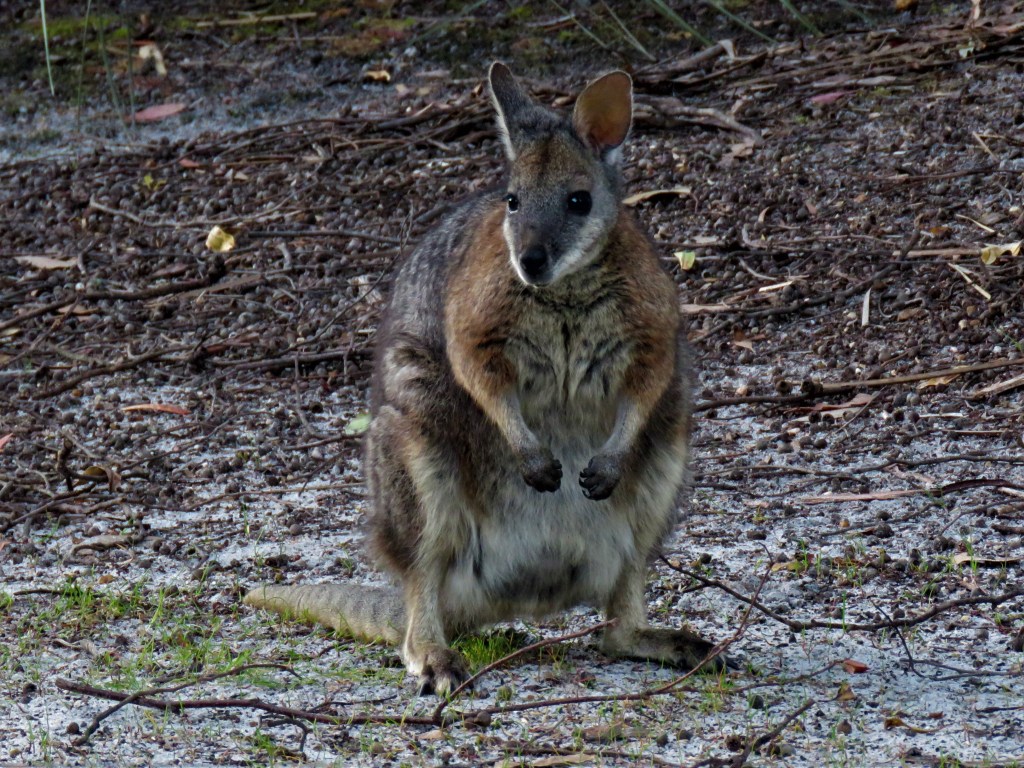
The following morning with the sun shining I went to see the many sights of K.I. There were plenty of Kangaroos and Cape Barren Geese around the visitor centre early morning but my first port of call was Admiral’s Arch where New Zealand Fur Seals were plentiful lazing on the rocks and playing in the shallow water.
Cape Barren Goose.
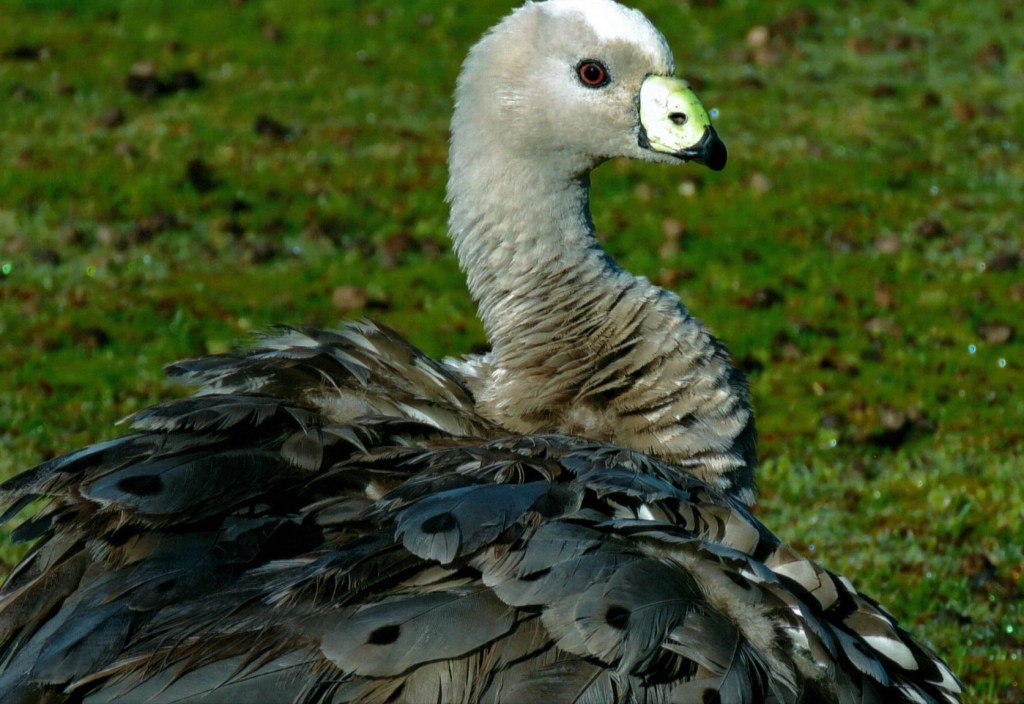
New Zealand Fur Seal.
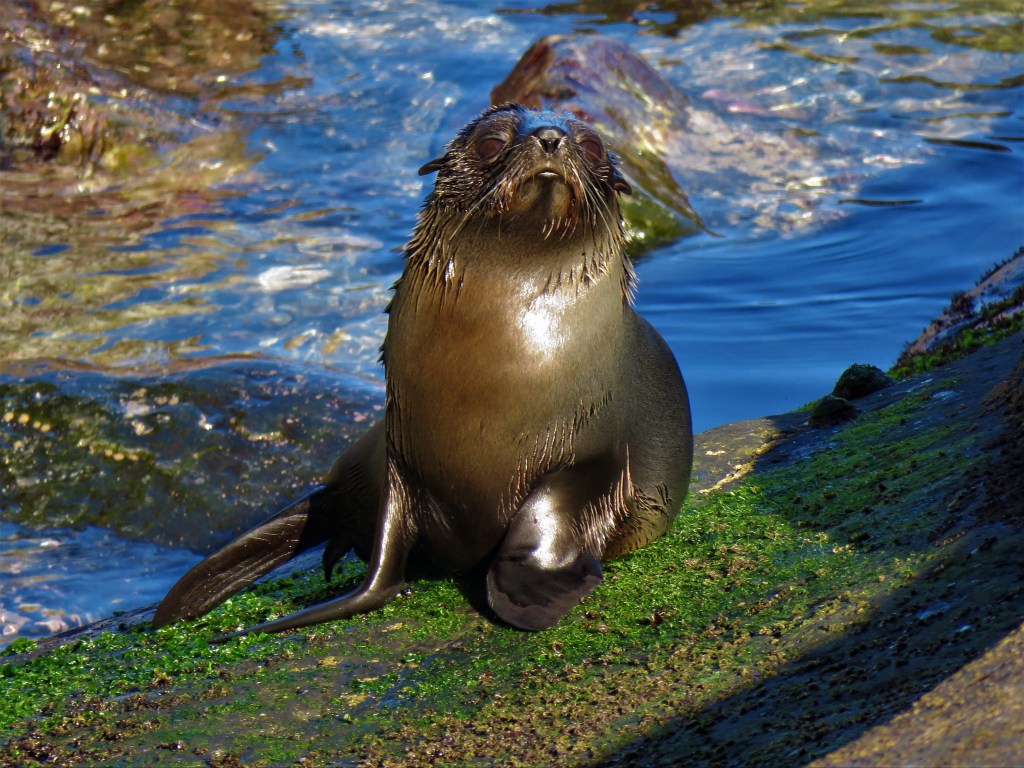
Next it was onto Seal Bay 70km away which is a breeding site for Australian Sea-lions. It is possible to view the Sea-lions from a boardwalk above the beach but I decided to pay $25 and go on an excellent guided tour on the beach where it was possible to get closer to the action as well as learn about the Sea-lions.
Seal Bay.
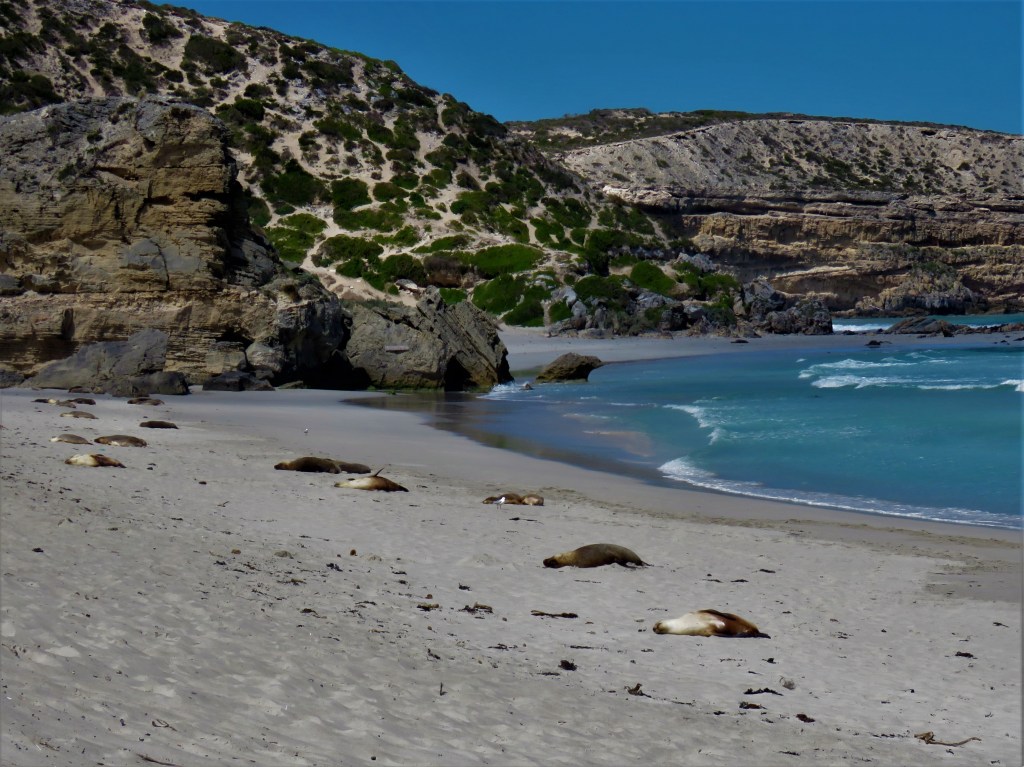
Australian Sea-lion (Female and Juvenile.)

Returning to the resort I came across my first Echidna on the island digging for termites at the side of the road East of Flinders Chase N.P. past the Hanson Road turnoff. This turned out to be another relaxed island species not too worried about my presence.
Echidna.

Surely one of the most striking of birds this Eastern Rosella caught my attention guarding a very promising nesting hole.
Eastern Rosella.

Back at K.I. Wilderness Lodge a member of staff was kind enough to show me a Koala, (one of three that regularly use the grounds of the resort,) and after 13 years in Australia my first wild one! Koalas are also common in the trees outside the visitor centre at Flinders Chase where the staff can point them out, although they are often inactive during daytime and perched high up in the trees.
Koala.
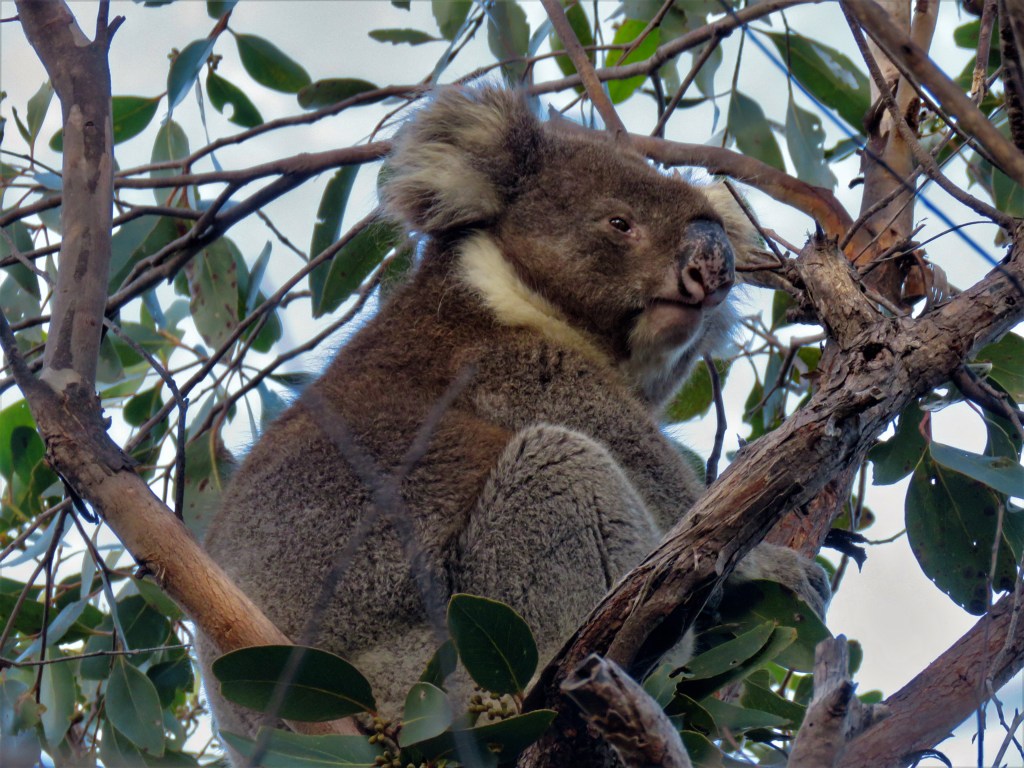
My last full day on the island I did the spectacular Rocky River Hike (22km return.) The walk passes Platypus Pools (I passed through a little late in the day for any action) and then follows the course of the Rocky River to the coast. Mammal wise there were Western Grey Kangaroos browsing on the lawns behind the visitor centre and during the walk I came across a solitary Echidna, but, judging by the huge number of diggings the entire length of the walk I think Echidnas would be a high probability.
Reptiles were also present on the walk with a couple of Southern Heath Monitors and plenty of Tawny Dragons seen.
Southern Heath Monitor.
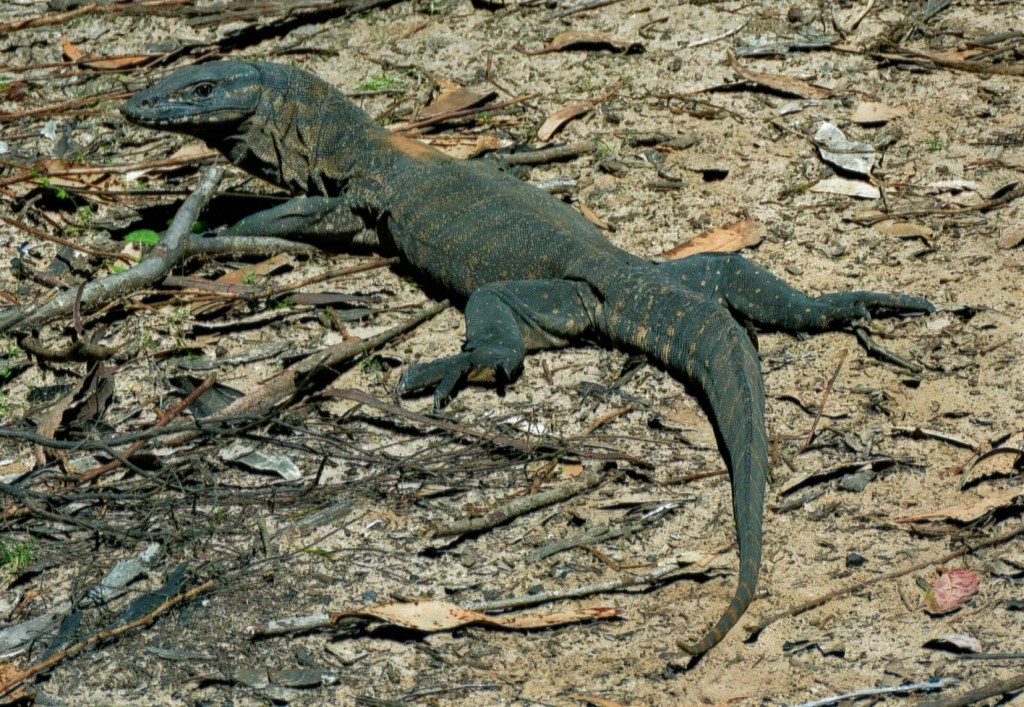
Tawny Dragon Enjoying The Warmth Of A Rock.
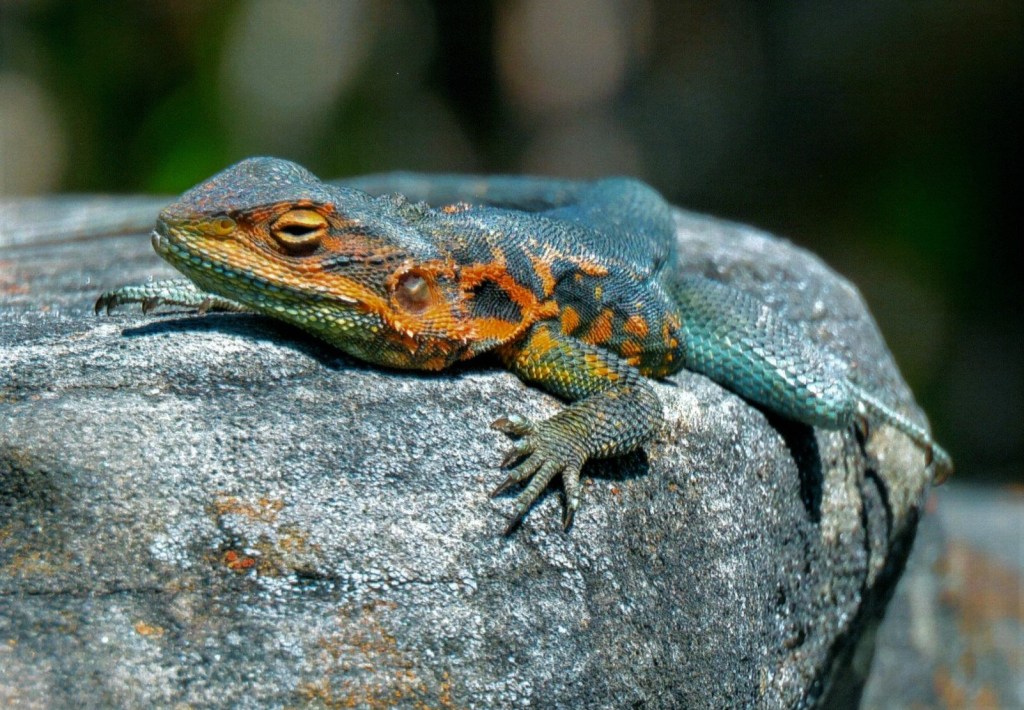
The final evening on K.I. was spent spotlighting down at Flinders Chase N.P., and a very productive spotlight it was, with an impressive Tiger Snake to kick off the evening, followed by numerous Western Grey Kangaroos, fifty plus Tammar Wallabies, thirty plus Brushtail Possums and three Koalas (including two in the trees outside the Visitor Centre that were by now very much active!) The diversity of larger mammals on K.I. is small but numbers are certainly impressive.
Tiger Snake.

Brushtail Possum.
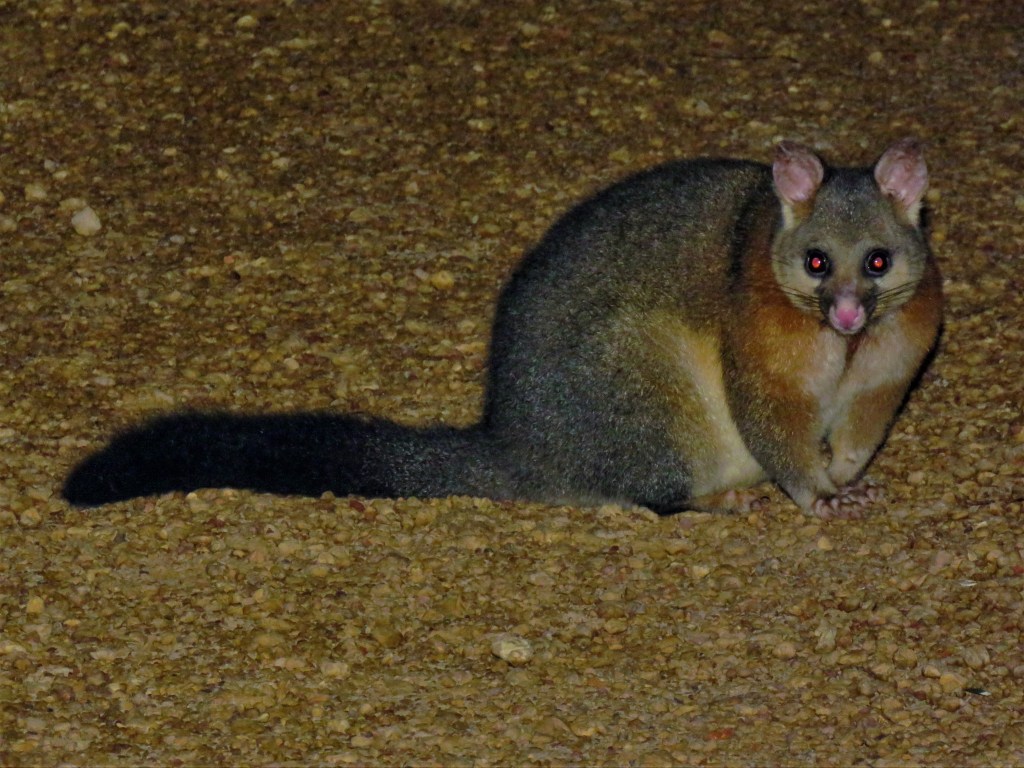
There were also a few frogs hanging around from the rain that had fallen a few nights ago, one of which was this impressive Mallee Spadefoot.
Mallee Spadefoot.

I conclude that despite S.A. having a bad track record with mammal extinctions there are still numerous very interesting species easily seen (some near endemics) and S.A. is a worthy destination for anyone interested in mammal watching.
#QuollingAround
2 thoughts on “Wildlife South Australia – Wombats and Wallabies”